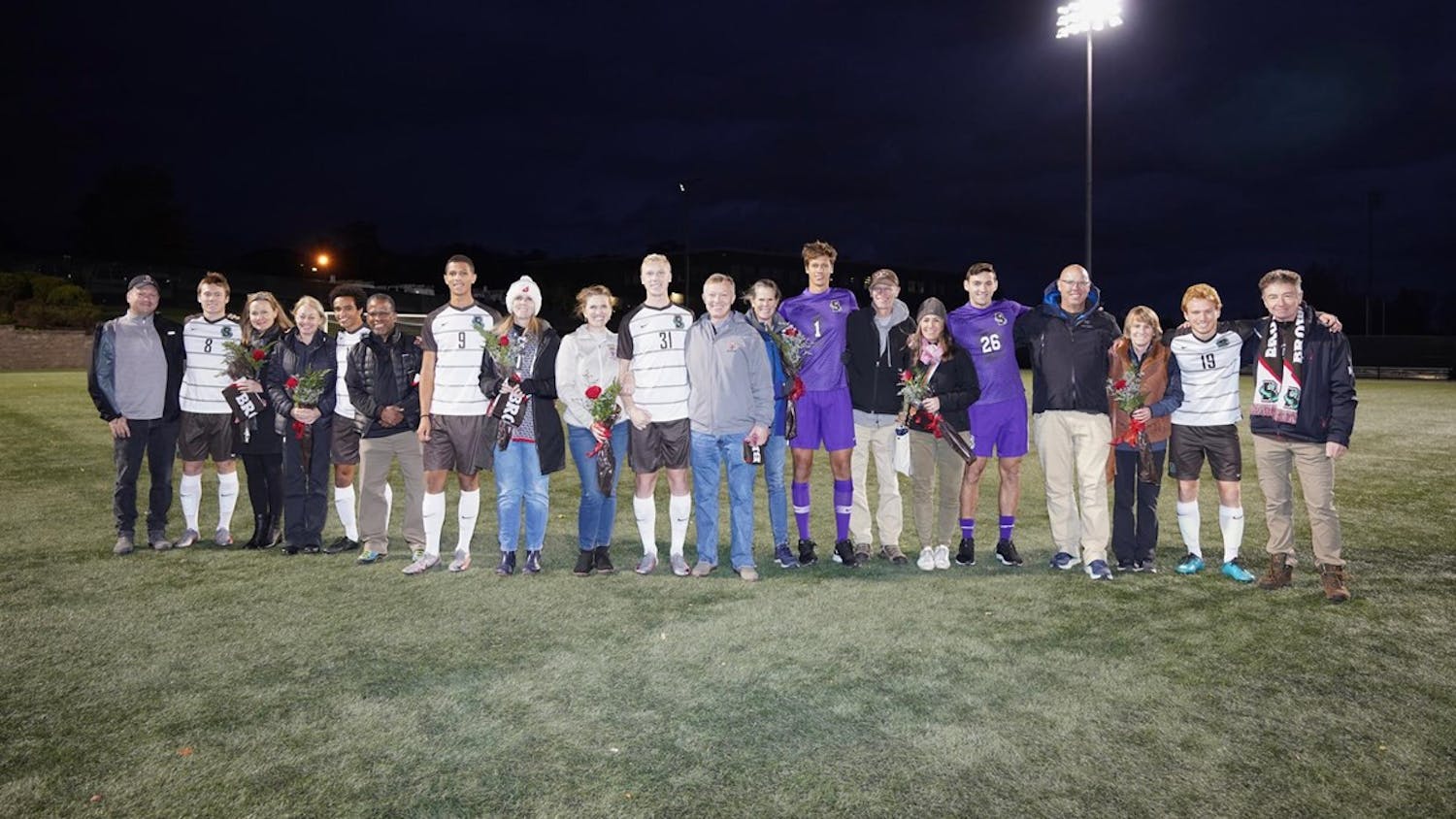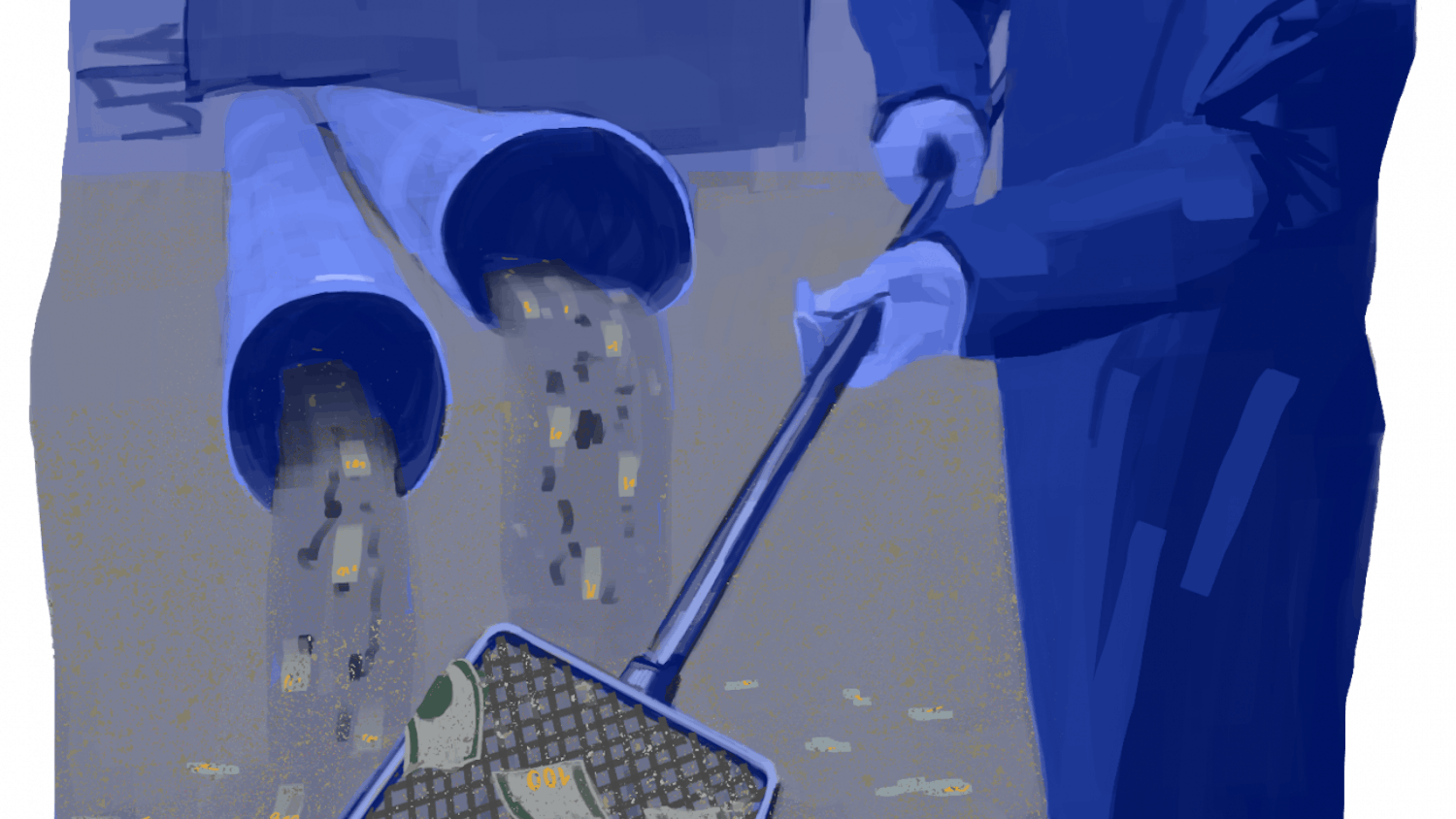Correction appended.
Catalyst. Clerestory. Visions.
Their posters are plastered on your bathroom stall.
African Sun. The Triple Helix. Somos.
They're on the dormitory door you open each night.
Awaaz. The Brown Jug.
There is a plethora of creative magazines at Brown.
Deadlines are fast approaching, and Brown's dozen or so creative magazines are churning out pages to bind and distribute around campus. To those uninvolved in the literary publication scene, these eclectic names may be bizarre and sometimes confusing. What goes on inside these covers?
Each magazine has a unique take on what it means to be "literary" and how to foster communication between the creators and readers of a magazine. Many magazines are centered on a simple goal — to create dialogue among writers, readers and artists.
"It's not just a journal," said Emma Janaskie '13, managing editor of Clerestory. "It's a cultural touchstone to get people more involved in creation itself."
Clerestory, which was named after a type of architectural window, is the oldest literary journal on campus. With each publication, the magazine searches out a variety of aesthetics. There is no thematic criteria for submissions — artists create their own inspirations. Issues include poetry, prose and art by Brown and Rhode Island School of Design students. The upcoming issue will even include a music CD, Janaskie said.
But it is not just literary magazines that are trying to spark new conversations. "Catalyst bridges the gap between sciences and the humanities," said Ariana Spawn '11, the magazine's editor-in-chief. "We take literary pieces that cover broad scientific themes."
Environmental studies concentrator Frans Johansson '95 founded the magazine in 1995. The editorial leadership remains academically diverse — one human biology and ecology concentrator and one literary arts concentrator.
The Catalyst is not the only science-based magazine on campus. The Triple Helix is an "international undergraduate journal of science, society and law," said Catherine McCarthy '12, editor-in-chief. Unlike submissions-based magazines, the staff works extensively with each author before and during the writing process, McCarthy said.
The Triple Helix is an internationally run organization with chapters at campuses worldwide. It was founded to "establish a forum for discussion about the integration of disciplines," said MariaLisa Itzoe '12, president of the Brown chapter. Each edition includes pieces written by Brown students and those written by their international peers. Recent editions have included submissions from the University of Chicago and the University of California at San Diego.
Similarly, the Round does not just include the work of Brown students. Professors and members of the writing community beyond the University are published in the literary magazine. In fact, 30 percent of the magazine is not written by Brown students, according to founder and poetry editor Elizabeth Metzger '11. The Round staff distributes print editions to 12 other schools with renowned master of fine arts programs to further the literary discussion, she added.
The magazine is "round in every sense," Metzger said, adding, "We reconnect writers to readers without delineations."
In addition to their bimonthly meetings, the Round's staff holds "literary salons" to discuss works of fiction, poetry and art, she said. Past published pieces include one work describing the 63rd Street Tunnel — a tunnel connecting Manhattan and Queens — and another titled "Instructions for a Self Portrait."
Other magazines use a specific theme as their founding principle. Because there is no department for South Asian studies concentrators, Awaaz, the South Asian Journal of Arts, seeks to connect both concentrators and writers to those interested in the field, said co-editor Manasa Reddy '12.5. Awaaz means sound or voice.
The Latino literary magazine Somos also has a theme based on culture and heritage. It publishes pieces in English, Spanish and Portuguese and interprets the idea of culture very broadly, said Kim Arredondo '11, publicity director and editor-in-chief. The magazine reflects its idea of community through its title, Somos, which means "we are" in Spanish.
Issues Magazine, an undergraduate arts and literary journal for Brown and RISD, changes its theme each semester. Last semester, the theme was "the Miniscule," and this spring, it is "the Majescule." But the Issues staff does not expect each piece to directly relate to its ideas. "The theme is much more general," said Matt Weiss '12, junior editor-in-chief. "We set it and then keep it in the back of our heads as we read submissions."
Issues is "a general magazine about the sense and sensibility of people on campus," Weiss said.
Even the Brown Jug, a humor magazine, relies on themes. The Jug has a "Harvard Lampoon-esque" style, said Greg Berman '11, editor-in-chief. Like Issues, the Brown Jug picks broad ideas such as "religion," "the future," "evil" and "inventions." About a third of accepted submissions are based on the theme each semester, Berman said.
The Brown Jug also has a much more collaborative structure to its article process. Students send in ideas and then work with the staff to craft the final article, Berman said. Their recent issue included humorous articles with titles like "All About the Benjamins" and "Conversations with Your Mother Mad Libs."
Despite these varied criteria, the magazines are always looking for contributors. March is a popular month for submission deadlines because many journals print spring issues. Acceptance rates for submissions vary between the different titles, but all of the magazines welcome new writers. Catalyst receives roughly 30 submissions a semester and publishes about half of them, Spawn said. Issues magazine is more selective — they receive roughly 40 to 50 poetry submissions and run about eight to 10, according to Weiss. Issues receives about 20 fiction submissions and run three to four of these longer pieces, he said.
"We are discerning," Janaskie said of Clerestory, "not exclusive."
A previous version of this article incorrectly listed Catherine McCarthy as a member of the class of 2011. She is a member of the class of 2012. The Herald regrets the error.




